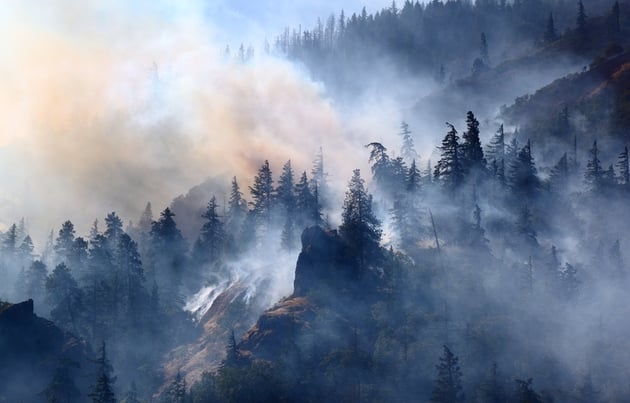How Forestry Practices Effect Forest Fires
Whether you're watching the nightly news or scrolling through your Facebook feed, it seems there's a wildfire making news somewhere in the United States. But have wildfires like these become more common—or do we just hear about them more because images from them make for captivating news stories?
The truth is that from the Southeast to the Sierra Nevada, wildfires are not only burning more frequently, but they’re also getting larger and more powerful while their seasons get longer. Although 2016 saw a reduction in wildfires, we are only one year removed from the record-setting wildfires of 2015 which burned more than 10 million acres and cost over $2 billion to fight. Only fifteen years earlier did the expense of fighting wildfires crest $1 billion.
Almost as alarming as the fires themselves are the reasons for their increase. Factors outside of our control, such as weather patterns, as well as things that we can control, like how we manage our forests, have played roles in the growth in frequency and intensity of wildfires throughout the U.S.
Over the past few years, much of the U.S. has experienced longer, drier, and warmer summers in conjunction with milder winters, leaving the nation’s forests primed for massive wildfires. This weather has advanced spring snow melt and allowed summer heat to build up earlier in the year. That subjects trees to water shortages, which can leave them weak and susceptible to insect infestations. The insects, in turn, leave a large swath of standing, dead trees in their wake, creating the perfect storm for massive, hard-to-fight wildfires.
Sadly, wet winters can also play a role in heightening wildfires by preventing reprieve to stressed-out trees and leading to an increase of grass and brush, which then dries out and becomes excellent tinder for a wildfire in the summer. The good news, however, is that following a wet winter, larger vegetation is more resilient to wildfire, meaning you’ll often see an increase in fire occurrence but a decrease in severity.
It’s also common to hear that the rise of massive wildfires is the result of our nation's forest management policies. Wildfires are nature's way of clearing out the thick, dry brush on the forest’s floor; but over the past century, aggressively suppressing fires has been the strategy used, leaving what amounts to massive amounts of kindling in the woods.
As the cost of fighting large-scale wildfires continues to increase and people's homes are in jeopardy of burning, the need to reduce potential massive wildfires is going to increase. In fact, many communities are now calling for prescribed burns or planned fires as part of their management plans. Others are using methods such as removing dead-standing timber from the woods or thinning (selectively removing trees) from the forest as a means to fight forest fires, and here's where we can help.
Our Primex line of forestry tires is built to stand up to hard work and challenging conditions—whether pulling fuels off a mountainside or helping thin the forest, Primex is ready to do its part in preventing wildfires.


